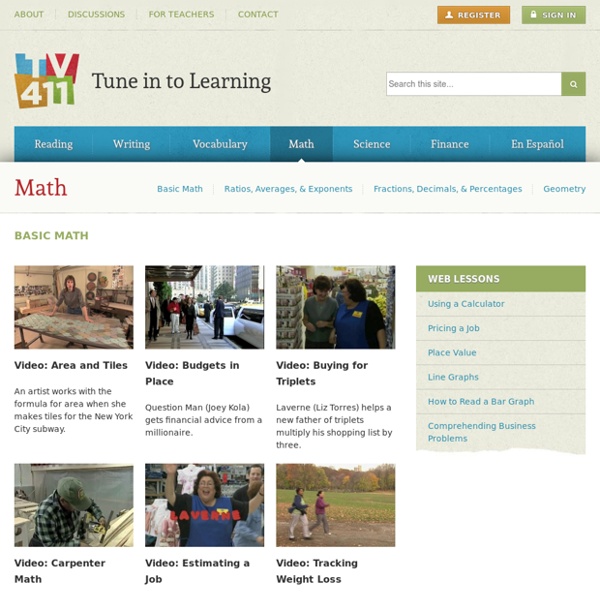



The Whiteboard Blog : Technology in the Classroom The Whiteboard Blog Connecting to Math in Real Life By Wendy Petti Who needs math games when a world of meaningful real-life fun is beckoning? It's easy and rewarding to connect to the real world in math class. Collections of Real-World Math Activities The math activity sites listed here are repositories of lesson ideas that can be explored offline without the use of computers. Math Goodies Their multi-media curriculum includes 168 in-depth lessons organized into instructional units. Practical Uses of Math and Science (PUMAS) This site offers 71 examples of real-life applications of math for upper elementary grades and above, including drawing/interpreting topographical maps, money math, creating math magic problems, measuring the heat of sand and rock; and much more. Mixing in Math This set of free activities helps teachers, parents, and after-school programs mix a bit of math into students' daily routines. National Math Trail Students from around the United States created real-life word problems related to their communities.
World 107 Favorite iPad Apps for K-8 Great iPad apps for K-8 Tablet computing and mobile devices promise to have a dramatic impact on education. A growing number of schools across the world are jumping on the digital bus and embracing iPads (less often, other tablet products) as the latest tool to teach literature in multimedia, history through games and simulations, and math with step-by-step animation of problems. Not surprisingly, student scores improve when they use iPads and their interest in school soars. I say not surprisingly because students love digital toys and in my experience work harder and longer if given the opportunity to do so with any of the digital offerings (ipods, laptops included). In my school, we have been rotating one set of Pads this year through K-8. Drawing AirSketch Free–Turn your iPad into a wireless whiteboard! Geography Health Human Atlas (lite)–With this free download you can experience just some of the power of the Blausen Human Atlas. History Maps Math Algebra Intro–Free. Mind Mapping–Thinking
Free Math Worksheets